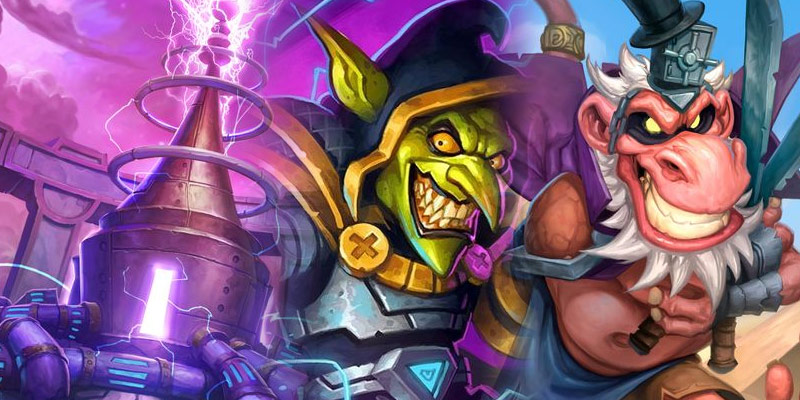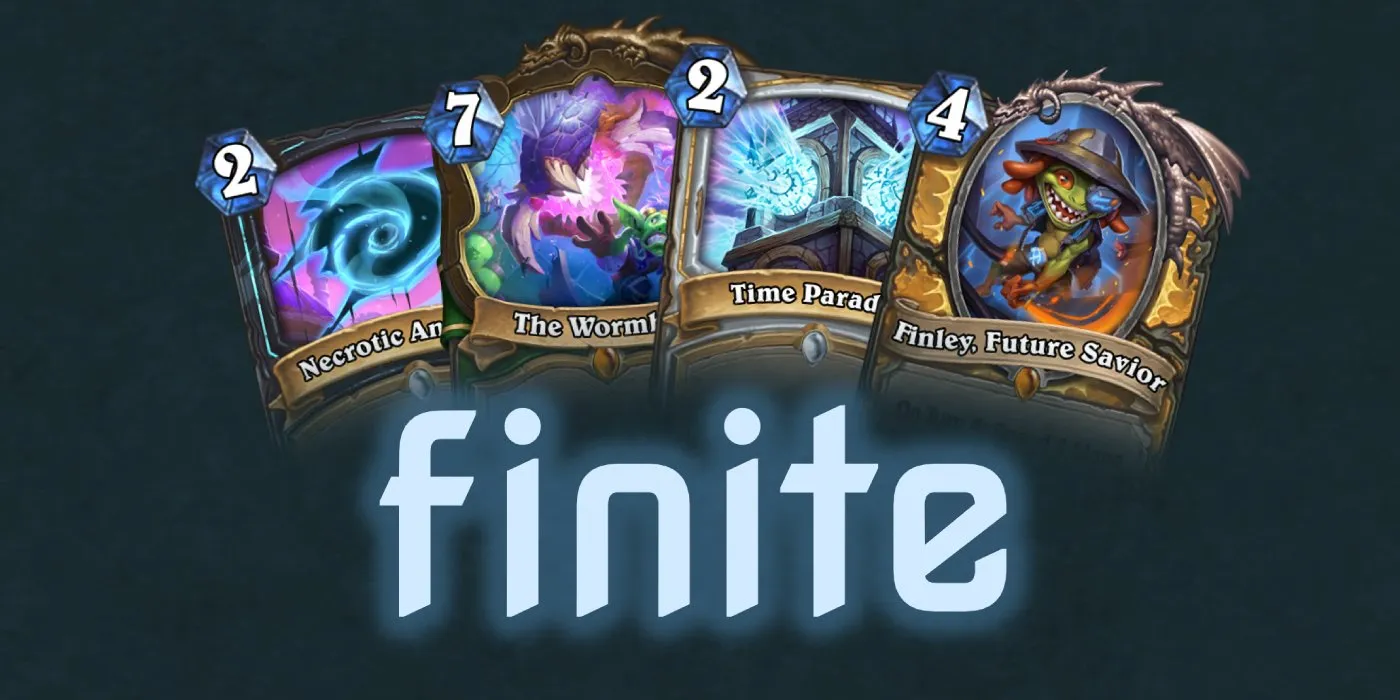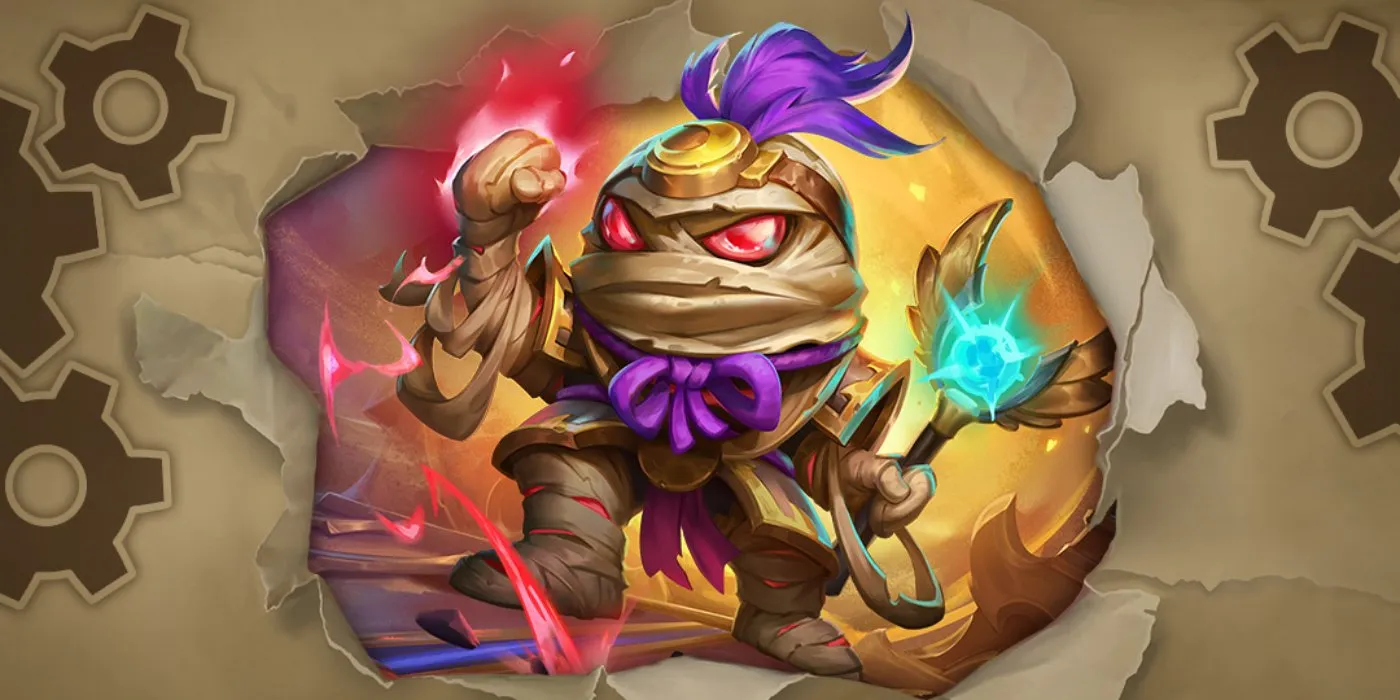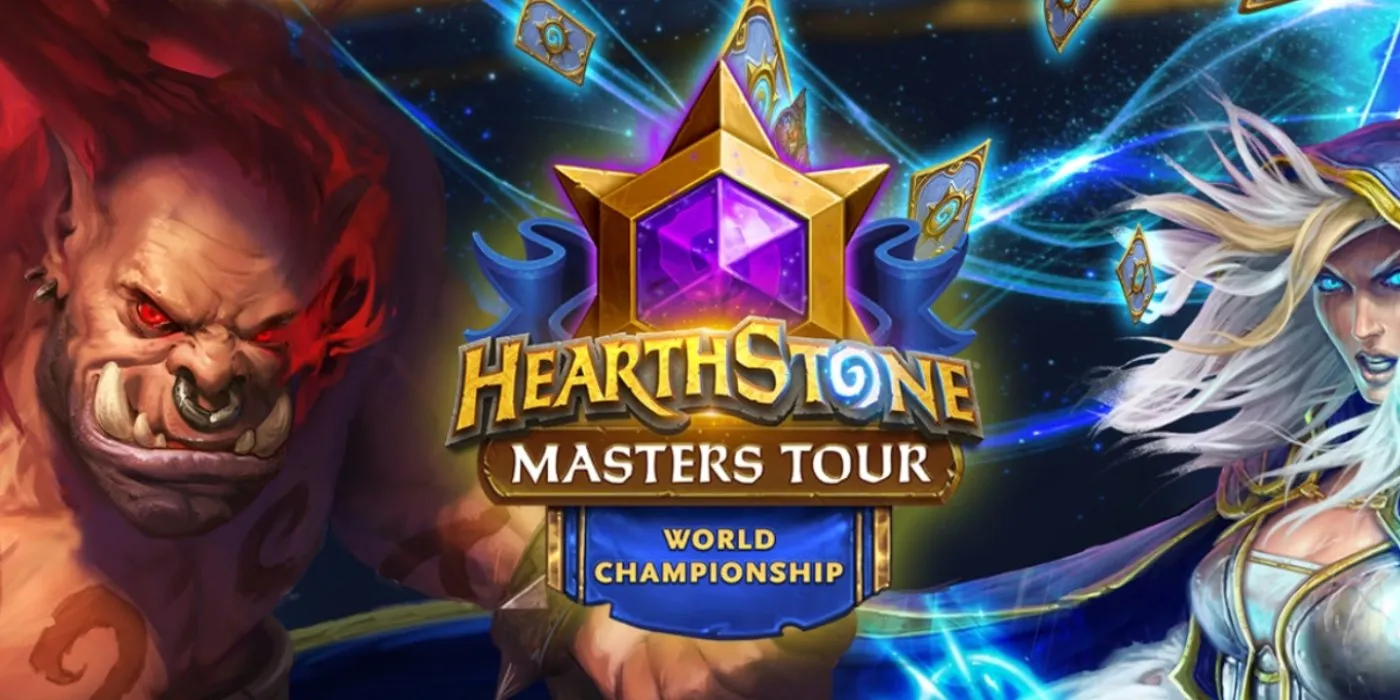The metagame has not changed much at all since last week, that's not necessarily a bad thing, but that's the normal state Hearthstone reaches 6-8 weeks into a new expansion. The most meta-defining deck in the game is Combo Priest; it is oppressive at high ranks, and the only decks that stand a chance are Highlander Hunter and Control Warrior. We also see a large number of Quest Shaman and Quest Druid decks, both of which play like control decks with powerful late-game win conditions. The best aggressive decks focus on board damage examples include Murloc Paladin, Aggro Warrior, and Aggro Overload Shaman, which all have their respective strengths and weaknesses. Grandmasters has also featured some of the most interesting matchups due to the success of combo decks against slower matchups such as Malygos Druid and Shirvalla OTK Paladin.
The new season of ranked ladder has begun, although it is not incredibly exciting at present. At the end of last season, as I trolled through Garbage Legend (bottom of the ranks), I began to see lots of players with the most popular decks misplaying them. It appears that players have decided which decks are worth crafting and used top decks to grind to Legend. This will work well up until we have the 23 re-released cards, which I expect will be about a week from now. I am excited for the mix-up of the format and using Ragnaros the Firelord to crush insects.
On to the decks I'm featuring this week: Jambre's Aggro Token Shaman, Quest Warrior, and Quest Thief Rogue. These decks do not entirely fit the traditional mold of Aggro, Control, and Combo; because I feel that they are all technically midrange decks in one way or another. I placed them in the closest category possible, but if you disagree, that's fine too.
Rock - Aggro
The term SMOrc comes to mind when I think of aggro.
Aggro is viewed as the most straightforward of the deck types for a beginner to understand and play. Your goal is to kill your opponent before they have a chance to stabilize the board, keep their life total outside your damage from hand, and you run out of cards to play. Your goal with an aggressive deck is always to balance how much damage you are dealing to your opponent each turn and fight for control of the board at each stage. Aggro thrives against Combo decks, which sacrifice board presence, removal, and healing in order to play powerful combinations of cards that can win them the game. Aggro suffers against Control, which focuses on removing all of your minions, healing, and generating value, so they have more resources at the end of the game.
Featured Deck of the Week: Jambre's #1 Legend Aggro Token Shaman
How to Play It
This deck is a new spin on Aggro Shaman that doesn't rely entirely on the fish people to generate a board. I tried the Murloc Shaman originally, but it got destroyed by players who knew how to beat it, and it left me disappointed and bored. Therefore, I am turning to a better player in Jambre to provide a fresh take. The deck does everything that Quest Shaman does well by using Lackeys to take control of the board early; but rather than using battlecries to generate infinite value, it continues to build the pressure via Sea Giant and Former Champ. The deck's goal is to generate a massive board followed up with Bloodlust, Vessina, and The Storm Bringer. It is incredibly advantageous to have 4 game-winning cards for big boards. This deck also takes advantage of arguably the best 2-card combo in the game: Mutate + Mogu Fleshshaper. If you haven't played against a Shaman who killed your minion by rushing Mogu Fleshshaper into Mutate creating Tirion Fordring on turn 4, you must not play much ladder. It's oppressive. The final tool this deck has is the powerful overload cards: Thunderhead, Likkim, Zap!, Lightning Bolt, and Voltaic Burst which are used early to fight for board and generate tempo in a hurry. I feel that these extra tempo generators are what is lacking from the Murloc Shaman. They give this deck an advantage in a meta that pushes snowball aggro and late-game value decks.
How to Beat It
The key to beating this Shaman is to clear the board each and every turn. That's easier said than done unless you're playing Control Warrior. It's played less than ever before, but it still does the very best job against token decks. The Shaman does an excellent job of playing out threats that are "must-kills" each turn, be patient. You need to play around Bloodlust at all times, but do your best to only clear board when absolutely necessary. If you spend your clears too early, you will be punished when they generate their 3rd or 4th big board in the game. The other key to beating this deck is to get ahead on the board, other aggressive decks that can grab board first will find ways to beat the token shaman. Taunts and other big minions are hard for this deck to handle. So bigger, late-game minions are a weakness you can exploit. Now that you know what to expect go beat the tokens down.
Paper - Control
Control is challenging because it takes practice to know what threats to expect from your opponent. The more knowledge you have of your opponent, the better you will perform. Control, typically, has a finite number of removal tools for individual minions and board clears. When playing this archetype each turn, you have to ask yourself a few questions: Do I need to remove this minion/board right now? How can I stabilize this board to keep it from getting out of control? How do I prevent lethal damage from my opponent's hand? By answering each of these questions, you learn when to clear the board and when to leave it, when you should be playing a taunt minion, and when you absolutely need to heal. Your end goal is how/when to stabilize and take full control of the game so your opponent cannot get back into the game. Control thrives against Aggro because eventually, all Aggro decks run out of cards; meaning that if you can keep the board, they will run out of steam and lose. Control suffers against Combo because it often lacks proactive plays to deal damage to the opponent, allowing Combo to play their combo pieces whenever they want.
Featured Deck of the Week: Quest Warrior
How to Play It
Quest Warrior has gone through a fair number of terrible iterations to arrive where it is today: a deck that can reliably beat Aggro and generate tons of 4/3s each turn. No, this is not a better value engine than Dr. Boom, Mad Genius; but everyone is tired of him anyways. This deck relies on weapons and rush minions to beat Aggro, prior to running away with the late-game. Armored Goon is one of the more surprisingly good cards from the latest expansion. The deck will often have Sul'thraze into Armored Goon to generate 10 or 20 armor, essentially winning any aggro matchup. The deck goes late and beats control via minion and weapon pressure that finally grind your opponent out of removal and health. It's a fun, new take on a Warrior, which continually smacks minions and your opponent with weapons.
How to Beat It
Weapon removal really slows this deck down, like an awful lot. Beyond that, decks that generate bigger boards late in the game like [Hearthstone Card (Quest Druid) Not Found] can eventually beat this deck. It struggles to handle more than a few minions at a time, and if it loses the board advantage, it has to pay a lot of health to make it happen. The Quest Warrior snowballs the game by continually stacking tempo onto the board; this leaves it very susceptible to swing plays. Late-game plans which generate value and board at the same time can grind the Warrior out of resources in hand. Quest Shaman is a good example against this deck due to the sheer amount of minions and value the Warrior will have to deal with. If you can empty the Warrior's hand, you stand a good chance of winning the game.
Scissors - Combo
Combo is sometimes classified more like a game of solitaire than a game of Hearthstone. Historically, combo decks are assembled in a way that once you complete each step, you win the game with a lethal in one turn, known as a One-Turn-Kill (OTK) deck. However, the current state of Hearthstone has very few decks which are capable of this. Most combo decks execute a series of plays to set up incredibly powerful boards by cheating out discounted cards or an infinite source of large minions (think Pogohopper Rogue and Conjurers Calling Mage). Combo decks thrive against control because the control deck often does little to nothing to threaten lethal against you. Combo suffers against aggro because by running combo cards, you sacrifice removal and healing; allowing aggro to beat you before you complete the combo. Once a combo deck has played it's combo cards; it is almost unstoppable.
Featured Deck of the Week: Quest Thief Rogue
How to Play It
Ah, Thief Rogue. The most RNG deck in the game right now. It has so much RNG, that it is capable of being relatively consistent. I decided to call it a Combo Deck rather than Aggro or Control, although the deck's play falls heavily into the mid-range category. I put it as Combo because it relies on hitting certain cards followed up by Tess Greymane as the final win condition. When that works, it's unbeatable. It is challenging, and every game is completely different, forcing the player to navigate the best possible route each turn. It sometimes feels like "Steal a Win Condition". One randomly-stolen card can make or break any given game. It's grindy and takes some serious thought to play, but that's the appeal in my opinion.
Thief Rogue aims to steal a bunch of cards to get the all-powerful 3/2 weapon with immune. Giving you a tempo piece that is completely immune to board clears. Your goal throughout the game is to generate tons of value from all of your battlecries and thief cards, which should give you plenty of tempo through the mid-game. If you haven't finished your opponent off by turn 10 or so, you are relying on the combo of Tess Greymane + Lab Recruiter to generate a massive board and refill your hand. I think that this deck has tons of different ways it can be built, depending on personal preference and what you are facing. I have provided a deck which has great matchups against Aggro due to the board clears, but it can struggle a bit late-game. I would recommend adding more draw cards or Sap in place of Blade Flurry if you find yourself continually facing Control or other Combo decks. Good luck with the RNG shenanigans you Kleptomaniacs!
Combo Steps
- Play tons of stolen cards.
- Play Tess Greymane.
- Play Lab Recruiter on Tess to shuffle 3 more copies for infinite value.
How to Beat It
Lots of Big minions are tough for Thief Rogue to handle, Quest Druid is very challenging for this deck to beat in the late-game. Quest Shaman can also be a serious challenge if you get bad stolen cards. Traditional Aggro will often get beat out on tempo by the Thief Rogue; but if it snowballs before the quest is complete, the Rogue will struggle to keep up. Occasionally, the Thief Rogue is just gonna beat ya with randomly-generated cards. But for every time that happens, they are bound to pull Totemic Might and Totemic Surge from the same Clever Disguise (no joke, this happened to me). If you set up board, the Rogue can't clear and focus on dealing damage due to limited healing; you are likely to come out on top.
I hope you have enjoyed this week's edition of Rock, Paper, Scissors. Tune in next week for another 3 competitive decks of each archetype.
Have you encountered these decks or played them? Tell us about your experiences and share your thoughts below!
If you believe a deck should be featured: please comment below or feel free to DM me, and I'll take a look!




Comments
Thief rogue is really bad in the current meta. Card generation is just too random. Early aggro decks can overwhelm you early, while slower decks will eventually run you out of resources.
With quest warrior, you're just better playing control. I'd love to say "After Boom rotates, it'll find a place in the meta", but a lot of the rush package along with Sul'thaze is rotating too. Blizzard will have to give warrior multi-attack per turn weapons in the next 2 expansions for quest warrior to be a thing.
I've featured just about every Tier 1 and Tier 2 archetype in the current metagame, fortunately changes are on the way to mix up the metagame for October. You're not wrong that the decks featured have some issues with them, but a deck with even a slightly positive winrate is worth a shot in my opinion. I think J_Alexander found a way to hit top 100 legend with Thief Rogue, so there is some merit to it. The deck is an extreme challenge to play though and I am still working through how to build the list for ladder.
"Ah, Thief Rogue. ... I decided to call it a Combo Deck rather than Aggro or Control, although the deck's play falls heavily into the mid-range category."
This is why I like to view archetypes as more of a tetrahedron than a triangle. Aggro, control, combo and value sit at the 4 corners and mid-range sits in the middle of them all. Really each individual deck sits somewhere in the middle, but closer to one corner than the others, and sometimes along an edge (e.g. a hypothetical combo-control hybrid that replaces a lot of card draw for removal, hoping to get the combo pieces by living long enough to draw it naturally rather than by power-drawing).
Anyway, in my mind Thief Rogue sits towards the value corner, but the nature of thief cards and the class in general mean it retains some amount of tempo (which I guess is mid-range-y aggro?). Plus the right RNG can shift a particular game towards control or combo... This is why I have always loved Thief Rogue, not only does it let you play with any and all cards, but you get to play all primary archetypes too!
Given the constraints of the article however, I agree with putting a value deck down as 'combo' (even without the multiplying Tess combos) since they both prey on control but struggle against aggro.
I like the visualization of the triangle quite a bit. That’s the goal of my article for sure is to demonstrate that they’re all on a spectrum across the different archetypes. I may have to steal that from ya.
Feel free!
I particularly like it for looking back and putting decks from the game's history into perspective. E.g. old pirate warrior is parked much closer to the aggro corner than equivalent standard decks today, while in the days of classic there simply weren't the tools to stray very far from the mid-range centre (not that we knew the triangle extended any further at the time!).